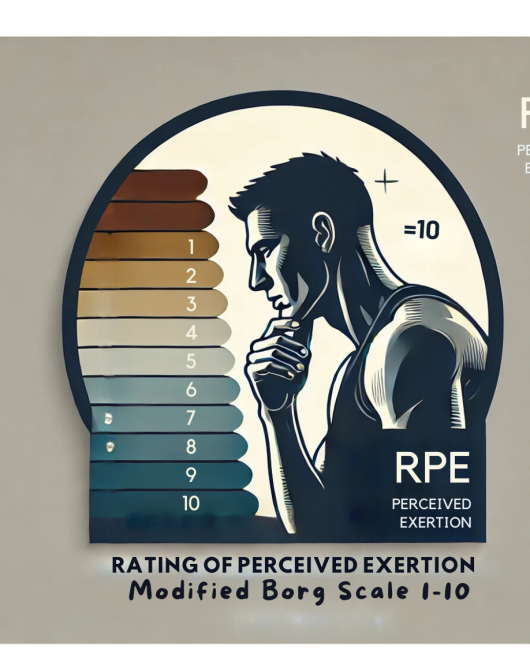The T2 Score builds on traditional training metrics like TRIMP by adding Sports specific scaling function for each sport modality.. This means it doesn’t just look at individual workouts but also considers the intensity of the session and the sport you just did . For endurance athletes like runners, cyclists, and rowers, the ETS (T2) Score can be a valuable tool for managing training load over time.
When it comes to endurance training, knowing how much stress your body is handling can make all the difference in reaching peak performance or risking burnout. The T2 Score, developed by Dr. Tony Rice, is a training load metric that combines intensity, duration in each intensity zone , as well as the sport modality that was done. Gives athletes a full picture of how hard their body is working.
Why is the ETS (T2) Score Useful for Endurance Athletes?
1. It’s Designed to account for short to medium intensity intervals
The T2 Score was created specifically to account for changes in intensity as well as sport type. This makes it particularly useful for endurance athletes who do many different sports and need to understands the cost of each training session. Unlike some metrics that assign a blanket load for every sport type, the ETS (T2) Score accounts for that, giving a more realistic view of your overall training stress.
2. It Reflects intensity and sport type impact Load
The T2 Score was created specifically to account for changes in intensity as well as sport type. This makes it particularly useful for endurance athletes who do many different sports and need to understands the cost of each training session. Unlike some metrics that assign a blanket load for every sport type, the ETS (T2) Score accounts for that, giving a more realistic view of your overall training stress.
3. It Helps Prevent Overtraining
By tracking the T2 Score over time, and accounting for Chronic and acute training ration,athletes can spot patterns in their training load and adjust before reaching a point of burnout. The T2 Score’s ability to reflect accumulated fatigue makes it a great tool for managing long-term training cycles, ensuring that athletes stay in peak condition without risking overuse injuries or mental burnout.
4. Great for quantifying cross training during injury
Because ETS accounts for the differing sport types and scaling for them it makes it possible to keep the an eye on the training load when athletes are either undergoing a period of recovery from injury or are doing a cross-training block in the off season.
How to Calculate the T2 Score: A Step-by-Step Guide
Calculating the T2 Score involves two key components: time in each training zone, and sport type. Here’s a step-by-step guide to calculating your T2 Score.
1. Time and intensity Distribution
•Multiply the time spent in each of the 6 training zones
HR Zones Scaling factor
Zone 1 0.9
Zone 2 1.0
Zone 3 1.35
Zone 4 2.1
Zone 5 5.0
Zone 6 9.0
Example calculation :
You train,
10min 30s in Zone 1
42min 42s in Zone 2
19min 19s in Zone 3
7min 50s in Zone 4
30s in Zone 5
No time in Zone 6
Let’s assume the session was an indoor rowing session you multiply by 1.35. So total load for the session is 131.6. If it had been a bike session we would have multiplied by 0.8 (78.0) or for rowing multiplied by 1.0 (97.5)
How to Use the T2 Score in Your Training Plan
1. Set Weekly ETS Goals
Using the T2 Score, you can set weekly load targets based on your training phase. For example:
•Base Phase: Aim for moderate weekly totals to build a foundation without overwhelming your body.
•Peak Phase: Increase your weekly T2 totals as you push toward your performance goals.
•Taper Phase: Reduce weekly T2 in the final weeks leading up to a race or event, allowing time for recovery and peak performance.
2. Monitor Fatigue and Recovery Needs
The T2 Score’s cumulative fatigue factor helps athletes know when to take a recovery day. If your T2 Score per week is high, it may be a sign that your body needs a break. Monitoring these scores can help you strike the right balance between hard work and rest.
3. Spot Patterns in Acute and Chronic Training Load
Tracking your T2 Score by comparing your 7 day and 28 day moving average . This way you can see if your ramp in training load/intensity is too high. For instance, if you see consistently high scores without any lighter days, you might be at risk of overtraining. By the same token if the load is too low for too long you may detrain.
Limitations of the ETS (T2) Score
Although the Endurance Training Score (ETS) is powerful, it’s important to be aware of its limitations:
•Requires Consistent Tracking: To get accurate insights, you need to regularly track your training by recording your HR for the session.
•Pick the correct sport: Be sure to select the correct sport on your watch or app when you train.
Using the T2 Score with Other Metrics
For many athletes, the T2 Score works best when combined with other metrics, creating a comprehensive view of training load. Here’s how it pairs with some other popular metrics:
•T2 + TRIMP: Use TRIMP for objective session load based on heart rate and T2 for cumulative fatigue, giving you insights into both immediate and ongoing training stress.
•T2 + Foster Score: If you want a simple daily metric alongside T2’s detailed load tracking, the Foster Score is easy to calculate and complements T2 well.
•T2 + RPE: Since T2 already includes RPE, pairing it with RPE on its own helps you see if subjective effort aligns with cumulative fatigue levels.
Why the T2 Score is Valuable for Endurance Athletes who do many sports are are looking for peak performance.
To sum up, the T2 Score is a comprehensive, data-driven way to measure training load. It’s designed for endurance athletes who need a more complete view of their workload by combining:
Try the T2 Score in Your Training
Ready to start using the T2 Score? Track your RPE, duration, and heart rate zone for your next few workouts, calculate your T2 Scores, and watch how your training load changes over time. This score can give you valuable insights into your overall training stress and help you train smarter.
This blog explains the T2 Score in straightforward terms, making it accessible and practical for endurance athletes looking to optimize their training. Let me know if you need any further adjustments!
What if want more information about Training Load
Why not have a read of some of our other blogs on this topic:
View more content like this

Understanding RPE: How Perceived Effort Can Improve Your Endurance Training
Have you ever finished a workout and thought, “Wow, that was really hard!” or “That was easier than I expected”? That feeling—whether the workout was
Training Load - The interplay between Chronic and Acute Training Loads
In the world of sports performance and fitness, training load is a powerful concept that helps athletes and coaches strike the perfect balance between improving
TRIMP: A Science-Backed Way to Measure Training Load in Endurance Sports
In endurance sports like running, cycling, and swimming, tracking training load is essential for performance improvement, injury prevention, and balanced recovery. One of the most


